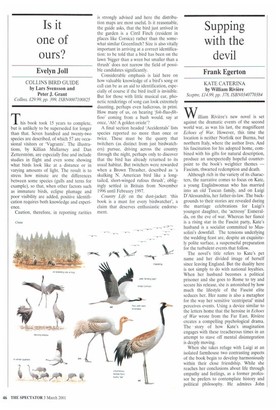Is it one of ours?
Evelyn Joll
COLLINS BIRD GUIDE by Lars Svensson and Peter J. Grant Collins, £29.99, pp. 399, ISBN0007100825 This book took 15 years to complete, but is unlikely to be superseded for longer than that. Seven hundred and twenty-two species are described, of which 57 are occasional visitors or 'Vagrants'. The illustrations, by Killian Mullarney and Dan Zetterstrom, are especially fine and include studies in flight and even some showing what birds look like at a distance or in varying amounts of light. The result is to stress how minute are the differences between some species (gulls and terns for example), so that, when other factors such as immature birds, eclipse plumage and poor visibility are added, positive identification requires both knowledge and experience.
Caution, therefore, in reporting rarities is strongly advised and here the distribution maps are most useful. Is it reasonable, the guide asks, that the bird just arrived in the garden is a Citril Finch (resident in places like Corsica) rather than the somewhat similar Greenfinch? Size is also vitally important in arriving at a correct identification: to be told that a bird has been on the lawn 'bigger than a wren but smaller than a thrush' does not narrow the field of possible candidates significantly.
Considerable emphasis is laid here on how valuable knowledge of a bird's song or call can be as an aid to identification, especially of course if the bird itself is invisible. But for those with little musical ear, phonetic renderings of song can look extremely daunting, perhaps even ludicrous, in print. How many of us, on hearing foh-fluo-fihfioo' coming from a bush would, say at once, `Ah! A golden oriole'?
A final section headed 'Accidentals' lists species reported no more than once or twice. These must be the quarry that twitchers (as distinct from just birdwatchers) pursue, driving across the country through the night, perhaps only to discover that the bird has already returned to its usual habitat. But twitchers were rewarded when a Brown Thrasher, described as 'a skulking N. American bird like a longtailed, short-winged rufous thrush', obligingly settled in Britain from November 1996 until February 1997.
Country Life on the dust-jacket: 'this book is a must for every birdwatcher', a claim that deserves enthusiastic endorsement.












































































 Previous page
Previous page